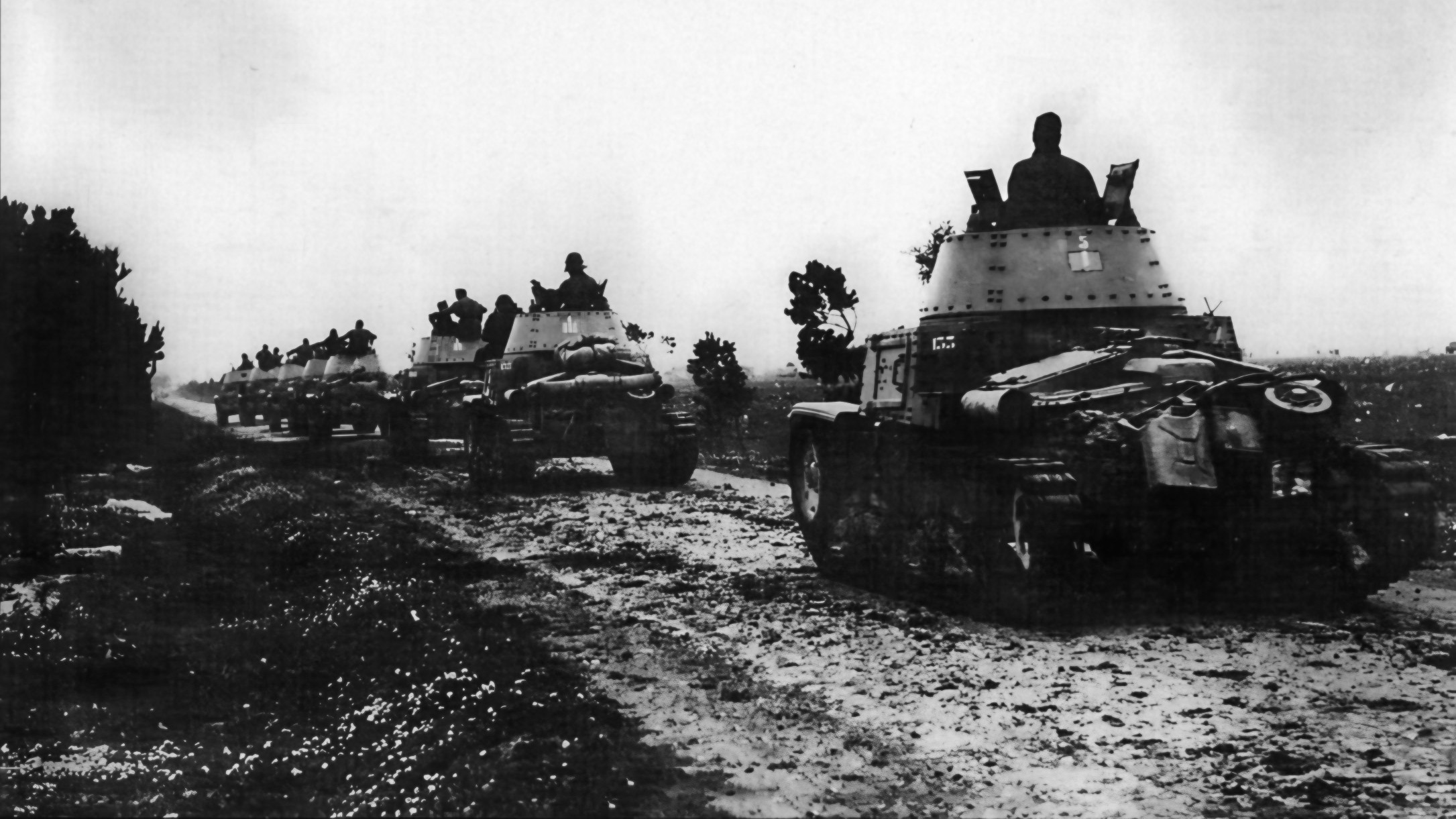Maybe through an event or some sort, with heavy penalties to the side, exceeding the number of divisions a certain port could suplly. so we do not end up with these massive armies, of like 50-60 divisions on each side. This in an area, which should not be able to supply so many troops. Tripoli could handle 45.000 tons per month. A German motorised division required 10.500 tons per mont. So the math is quite easy. It should not be possible to see these enormous armies in places like North Africa, Finland and certain parts of Russia.
North Africa: The War of Logistics

 warfarehistorynetwork.com
warfarehistorynetwork.com

We should not see more than 20-30 divisions on each side, in my opinion. As it is now, its twice that number. Perhaps we could use a new rule, for every division entering these very low infrastructure regions. Like the supply and oil consumption, double in size?
North Africa: The War of Logistics

North African Campaign: WWII's Ultimate War of Logistics
In WWII, Nazi Germany believed that winning the North African Campaign was the key to defeating England. Learn why logistics did them in.

The Budding Axis Logistical Crisis
The logistics problems facing the Germans in North Africa were to be extremely challenging. The primary Italian ports for shipping and embarkation to Libya were Naples, Bari, Brindisi, and Taranto. The main port in Libya was Tripoli, capable of handling five cargo ships or four troop transports at a time, or approximately 45,000 tons of cargo a month across its docks.
Although the Italians tried to improve their Libyan ports, they did so only after wasting considerable effort on repairing harbors in Albania. The small capacity of the ports also limited the size of convoys. Instead of running a relatively few large convoys, which would have been more efficient in terms of convoy defense, the Italians had to send many small ones, wasting fuel and escorts.
The Italians initially used massive escorts, including cruisers, but they were eventually forced to curtail this due to fuel shortages. Initial convoys averaged just four merchant ships with nearly as many destroyers or torpedo boats acting as escorts and at least one aircraft patrolling ahead of a convoy during daylight. Later, air cover for the convoys was greatly increased as the Italian air force made a major commitment. In time the Italian convoys were reduced in size, averaging just two ships, and becoming smaller in size as the British gradually eliminated the larger ones.
Routing and scheduling of convoys for Libya was often complex. Initially the Italians tried to sail on moonless nights. Later, the threat of attack at night was far greater than during the day, so running during daylight became preferable. The Italians were forced to make costly efforts to stay as far away as possible from Malta. As a result convoys had to either sail to the west along the Tunisian coast or far to the east, not far off the Balkan coast. Such routing doubled the travel distance across the Mediterranean, making it expensive in terms of time and fuel as well as the wear on ships.
Italian shipping resources were further taxed as ships were also needed to support troops in the Balkans and the Aegean.
In terms of logistics, a German motorized division required 350 tons of supplies a day or 10,500 tons a month. To transport this quantity over 300 miles of desert, OKH calculated that, apart from the troops’ organic vehicles and excluding any reserves, would require 39 columns or ground convoys each of 30 two-ton trucks, running four or five round trips a month.
The assignment of the 15th Panzer Division to the Deutsches Afrika Korps (DAK) raised the motor-transport capacity needed to maintain the DAK by 6,600 tons. This was 10 times as much, proportionally, as that allocated to the armies preparing to invade Russia. Whether Rommel received more reinforcements or went beyond the 300-mile supply range, a shortage of support vehicles was bound to ensue. Nor was there sufficient coastal shipping to help alleviate the problem. Hitler relented, however. While granting Rommel the trucks he needed, Hitler coupled them with an explicit order forbidding him from taking any large-scale offensive action that would further raise his requirements.
The force of seven Axis divisions in Libya, along with the supporting air force and naval units, required a supply level of 70,000 tons per month. This was significantly more than Tripoli could handle, so a crisis was sure to develop.
- Tripoli has a size 3 naval base, so if I read the text above correctly, it can provide 45.000 tons of supply per month, or roughly 4 motorised divisions.
- Benghazi has a size 2 naval base, so should be able to provide 30.000 tons of supply per month. Roughly 3 motorised divisions.
- Tobruk has a size 6 naval base, so it should be able to provide 90.000 tons of supply per month. Or 10 motorised divisions.
We should not see more than 20-30 divisions on each side, in my opinion. As it is now, its twice that number. Perhaps we could use a new rule, for every division entering these very low infrastructure regions. Like the supply and oil consumption, double in size?
Attachments
- 2
- 1
- 1


